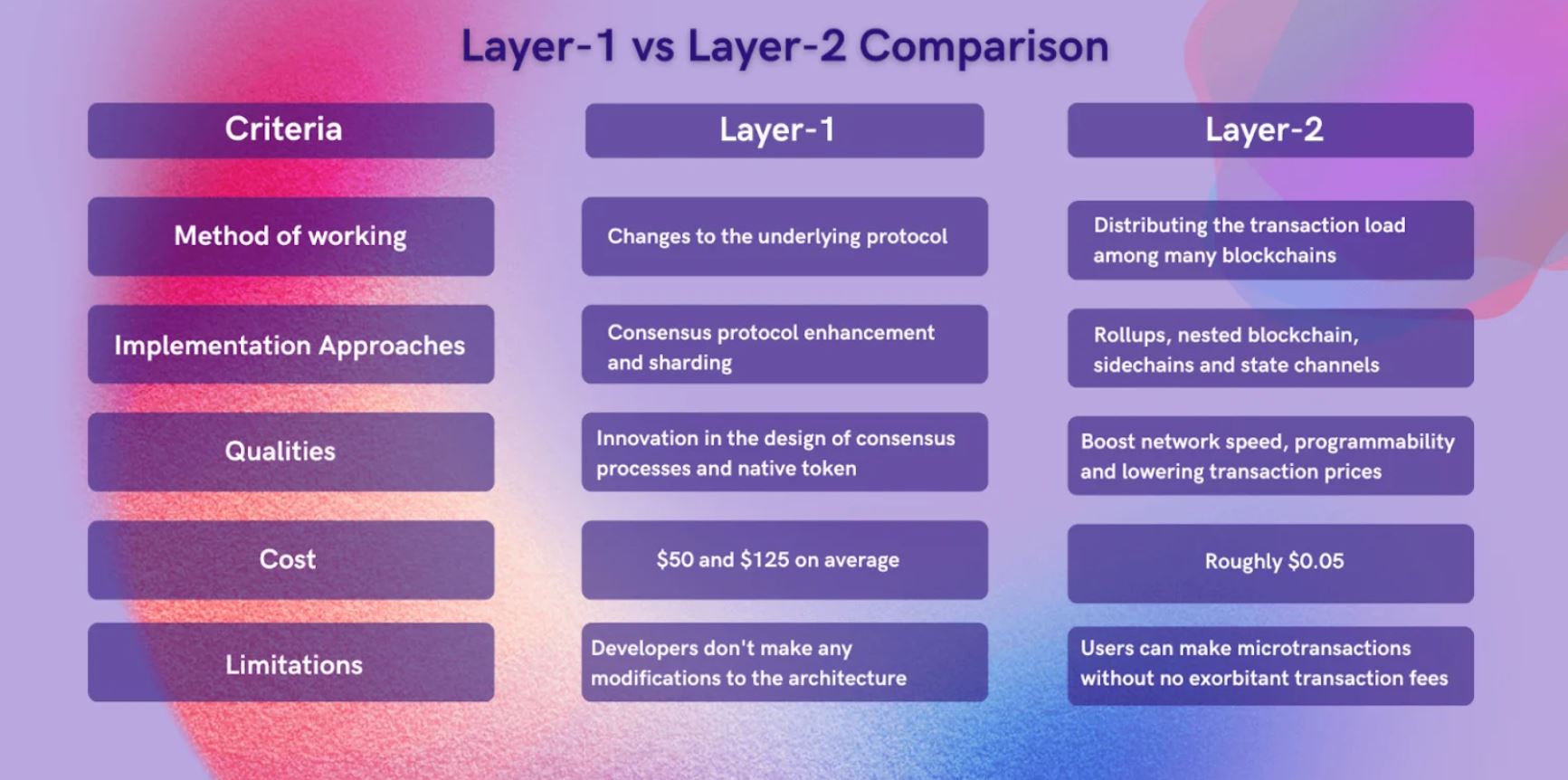Layer 1 and Layer 2 networks. If you’re in crypto, you would have heard of them. But what are these exactly? What makes a project a Layer 1 or Layer 2?
And, what are the differences between Layer 1 and Layer 2 networks? Let’s find out today!
What Is a Layer 1 Network?
In short, Layer 1 networks are based on blockchains. These form the foundation that the network builds upon. Layer 1 blockchains provide:
- Block Production. Blocks are created by miners or validators. They contain information about transactions. This process happens on the Layer 1 blockchain.
- Security. The consensus mechanism of a network is in its Layer 1. Some examples of these are Proof-of-Work and Proof-of-Stake.
- Finality. Layer 1 blockchains “finalize” its transactions as well. This makes the transaction immutable, or irreversible.
Some popular Layer 1 chains include Bitcoin, Ethereum, and Solana. Now that you understand what Layer 1 blockchains do, let’s move on to Layer 2s.
#Blockchain #Layer 0, 1, 2 and #decentralized applications (#dApps) explained in LESS than 60 seconds on #CNBC
BAD? How do YOU explain this tech to YOUR family/ friends? Add in the comments

pic.twitter.com/5jhduo3UGT
— Alex SBorg
(@alex_fazel) January 20, 2023
What Is a Layer 2 Network?
Usually, Layer 2 networks are blockchains too! However, they are built atop Layer 1 networks. They leverage the features above. But, what do Layer 2 networks bring to the table?
In general, Layer 2s helps to improve the scalability of Layer 1s. They bundle up transactions and process them. Once it has done so, it passes these on to Layer 1 for finalization. To understand this better, you can refer to the tweet below.
Indeed, Jeroen comes up with the perfect analogy. On “Layer 2”, his relatives spend on gifts in their local currency. After a few months, they come together to net out everyone’s costs. Once this is done, the final amount is transferred. All costs are “finalized” in one go. This happens on the “Layer 1”.
You may have heard last week that Coinbase is launching a layer 2 blockchain, BASE. You might think: a what?
The easiest way to think about the differences between layer 1 and 2 chains is this example:
— Jeroen van Amerongen (@VanAmAdvisory) February 28, 2023
Now, this is convenient for Jeroen and his relatives. They don’t need to transfer money between themselves all the time! That’s pretty smart of them, if I may say so.
Layer 2 builds on the same idea. By doing what they do, it saves a lot of processing power for Layer 1. In turn, transactions are approved faster. With less load on Layer 1, fees are cheaper for its users too!
In today’s crypto space, Layer 2s are thriving. Some prominent projects include Optimism and Arbitrum. Both of these make use of Optimistic roll-up technology. New projects are upcoming too! One such example is Starknet, which uses ZK roll-up technology. To learn more about these technologies, you can refer to our previous research here.
Differences Between Layer 1 and Layer 2 Networks
Now that you’re clear on what they are, let’s recap the differences between Layer 1 and Layer 2. Layer 1 manages the security, block production, and finality of the network. On the other hand, Layer 2s do not. They need to leverage another Layer 1 for these functions.
Layer 2 process transactions and bundle them up. Then, they pass it on to Layer 1s for finalizing. They help to improve the scalability of Layer 1s. Together, the network has faster transaction times and lower fees. Hence, it can handle more transaction loads and users. On the other hand, a Layer 1 by itself is unable to scale well without a Layer 2.
For an in-depth technical look at its differences, you can check out the table below.

Which Should I Consider to Build My Project On – Layer 1 or Layer 2?
As a user, you may be thinking of using either Layer 1 or Layer 2 networks. As a developer, you could be considering which to build your project on too. Now that you’re aware of the differences between Layer 1 and Layer 2, you can decide better!
As a user, you would like to participate in DeFi. You’d like to trade some NFTs and play some blockchain games. If that’s up your alley, then Layer 2s are definitely for you. First, you’ll enjoy faster network speeds for your transactions. Second, you’ll pay lower fees for them too.
Now as a developer, there are more points for you to consider. What does your project hope to achieve? If your project aims to improve Layer 1, then you’d have to build it there. For instance, your project could be aiming to improve Layer 1’s consensus.
If your project aims to cater to retail users, then you should build it on Layer 2. With faster transaction speeds, you’ll be able to work and deploy faster. You’ll also spend less on transaction fees while building your project. But, there’s a downside though. You would lose the audience of users that use only the Layer 1 blockchain.
Conclusion
Alright! That sums it up for today’s article! By now, you should have a good understanding of Layer 1s and 2s! This info will be handy for you when you decide which network to participate in.
Disclaimer
The information discussed by Altcoin Buzz is not financial advice. This is for educational, entertainment, and informational purposes only. Any information or strategies are thoughts and opinions relevant to the accepted levels of risk tolerance of the writer/reviewers and their risk tolerance may be different than yours. We are not responsible for any losses that you may incur as a result of any investments directly or indirectly related to the information provided. Bitcoin and other cryptocurrencies are high-risk investments so please do your due diligence. Copyright Altcoin Buzz Pte Ltd.
The post Differences Between Layer 1 and Layer 2 Networks appeared first on Altcoin Buzz.




